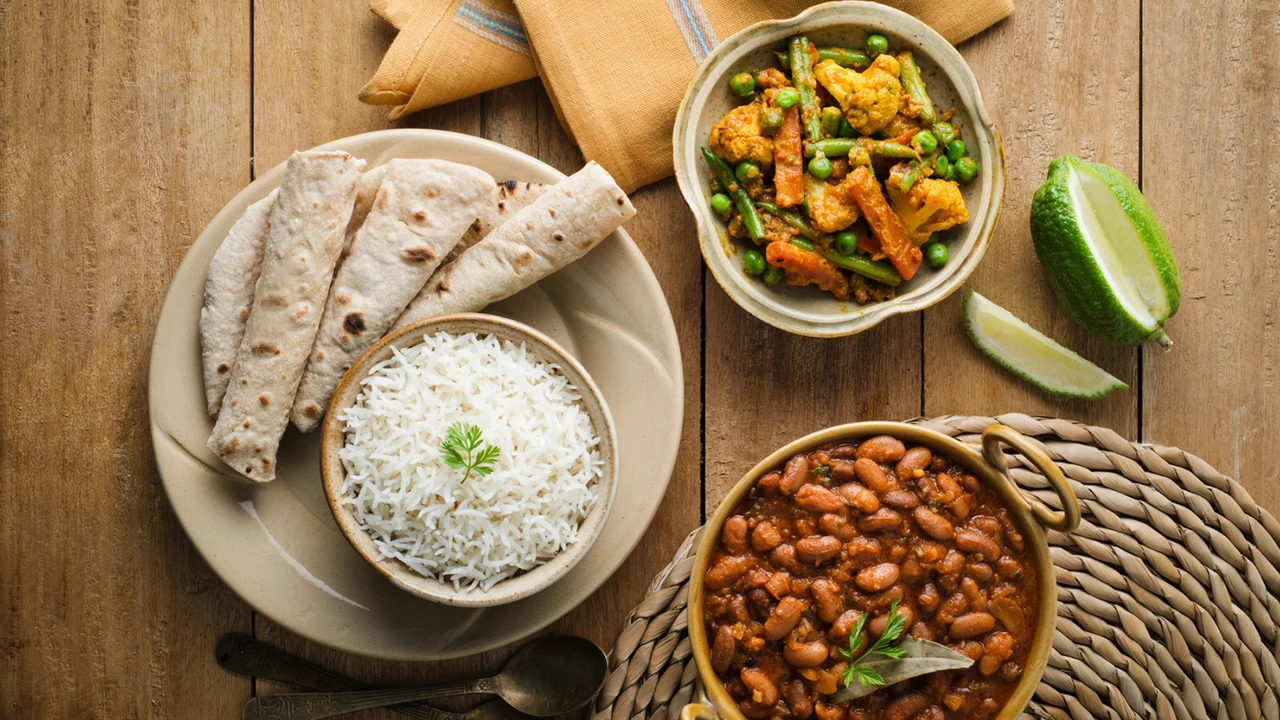Understanding Indian Cuisine and its Healthy Aspects
Fascinating, isn’t it? The complexity that underpins Indian cuisine, with its tantalizing tapestry of textures and flavors, is quite the culinary marvel. Cooking for my sons, Yash and Varun, I’ve learned to appreciate the delicate balance of spices, the meticulously chosen ingredients, and the pertinent cooking methods that make Indian food a wholesome affair.
Moreover, beyond the multifaceted sensory delight, Indian food is filled with ingrained health benefits because of its generous use of native fruits, vegetables, grains, and spices. Together, they form a nutritional symphony that make it onto every day food platters across the nation. So let us embark on a culinary journey to understand what makes Indian food healthy.
Unveiling the Magic of Indian Spices
When one thinks of Indian food, they imagine a palette of spices. Turmeric, cumin, coriander seeds, black mustard seeds, fennel, cardamom - the list is seemingly endless! Most people are not aware of the health benefits these spices possess. The active ingredient in turmeric, for instance, is curcumin that has anti-inflammatory, antioxidant, and even anti-cancer properties. Similarly, cumin aids digestion, fennel seeds are known to work wonders for stomach troubles, and black cardamom boosts the immune system.
One of the signature attributes of Indian cuisine is its ability to seamlessly integrate these spices into dishes while also providing a world of health benefits. The mere spectacle of watching my boys enjoy a home-cooked chicken curry, blissfully unaware of the immunity-boosting properties of the spices that go into it, is a wondrous sight!
Celebrating the Diversity of Indian Grains
Indian kitchens are stocked with a diversity of grains and pulses that make the culinary world so much richer, and luckily, healthier. Besides the well-known wheat and rice, we are also privileged to have a variety of millets - ragi (finger millet), bajra (pearl millet), and jowar (sorghum).
India is not just the land of biryanis and rotis, but also of ragi roti and bajra khichdi, dishes I vividly remember my grandmother making. These grains are nutrient-dense powerhouses high in fiber, calcium, phosphorus, and iron, not to mention a low glycemic index that makes them ideal for those managing blood sugar levels.
The Power of Indian Greens
Indian cuisine also makes the most of a variety of green leafy vegetables like spinach (palak), fenugreek leaves (methi), and amaranth (chaulai). Each of these has its distinct taste and comes loaded with health benefits. I remember when Yash and Varun were young; I would sneak spinach into their favorite dal or curry ensuring they got their dose of iron, calcium, and Vitamins A, C, and K!
The variety of greens in Indian dishes is an amazing display of our ancestors' wisdom in making the best use of what nature offered, regardless of the season.
Embracing the Indian Superfoods
A variety of superfoods found in Indian cuisine makes it a treasure trove of excellent nutrition. One such superfood, used extensively in my kitchen, is the humble lentil (dal). An inexpensive source of protein, lentils are also rich in fiber, iron, and folate. From a comforting bowl of dal to a hearty plate of sprouts salad, lentils can never be underestimated in their nutritional prowess.
Another superfood that has been part of the Indian diet for thousands of years is ghee. Today, the world is finally waking up to the benefits of ghee, recognizing it as a healthy fat beneficial for digestion, immunity, and even weight loss.
Celebrity Indian Dishes and their Health Quotient
Indian regional cuisines have many healthy dishes that are part of everyday meals. Take for instance, the South Indian breakfast staples - idli and dosa. Made from fermented batter comprised of rice and lentils, these dishes are a good source of complex carbohydrates, protein, and micro-nutrients. Another typical Indian dish is Rajma Chawal - a kidney beans curry served with rice, a staple meal in North Indian homes. It gets its health badge because of its rich protein and fiber content.
It's beautiful to see how carefully each region uses the local produce to make dishes that not only satisfy the taste buds but also take care of health in a big way.
Feeding the Soul: The Concept of Satvik Food in India
Intrinsically, Indian food philosophy is deeply rooted in Ayurveda, which signifies the delicate balance between the body, mind, and spirit. This is well represented in the concept of Satvik food – a diet that emphasizes fresh, locally grown food, eaten in their most wholesome form.
This emphasis on physical and mental harmony in choosing what we eat has been an age-old part of Indian cuisine. By practicing this, you not only give your body the right nutrients but also achieve that elusive peace of mind everyone is after. Now, isn't that a deliciously healthy thought?
So there you have it! The underlying beauty of Indian cuisine lies in its perfect blend of health and flavor, the intricacy of techniques perfectly harmonized with the simplicity of local ingredients, and the magic of spices amplifying the health benefits under that delicious façade. It’s a culinary journey I've been on for years, and each meal is an adventure to a healthier me, and a healthier family!
